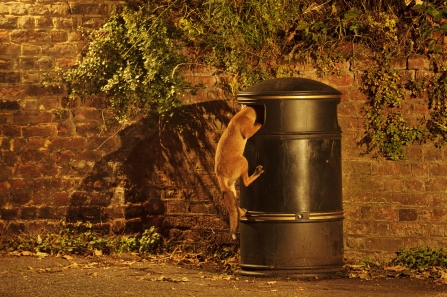
Credit: Terry Whittaker/2020VISION
Last week, we explored the world of the garden nemesis the slug. This week, we have an equally controversial animal that divides opinion across the country: the fox.
Decades ago, you would have been lucky to see a fox out in the countryside, but since the Second World War, foxes have been crossing the border from country to city. As suburban houses started to populate Britain with large gardens and sheds perfect for making dens, foxes branched out into this new habitat and eventually made their way to the bright lights of the city. Maybe not for fame and fortune, but for a place to live and the occasional easy meal. Fox dens are difficult to find, and are often under sheds, or even in roofs, but if you look out your window at night you may be fortunate enough to see the striking red coat and long bushy tail of the fox as it goes about its business.
For some, the success of the fox in urban environments is not celebrated, and the mammal is sometimes considered as a pest. Here are a few explanations for some of those naughty foxy behaviours.
Foxes are easily adaptable, which is one of the reasons they are so successful in our cities. They will eat many species found in your garden such as earthworms and beetles, as well as small birds and feral pigeons. Fruits and berries are on their menu too, and a rat will not be passed up as a tasty meal either. However, foxes are seen as pests in our cities for scavenging food scraps from our bins and making a mess in the process. Nevertheless, let’s give them a break; if you were hungry and had to hunt for your own food, chances are you wouldn’t give up the chance for an easy meal would you? Also, if possible, limiting food waste and making sure it is secure will also help.


